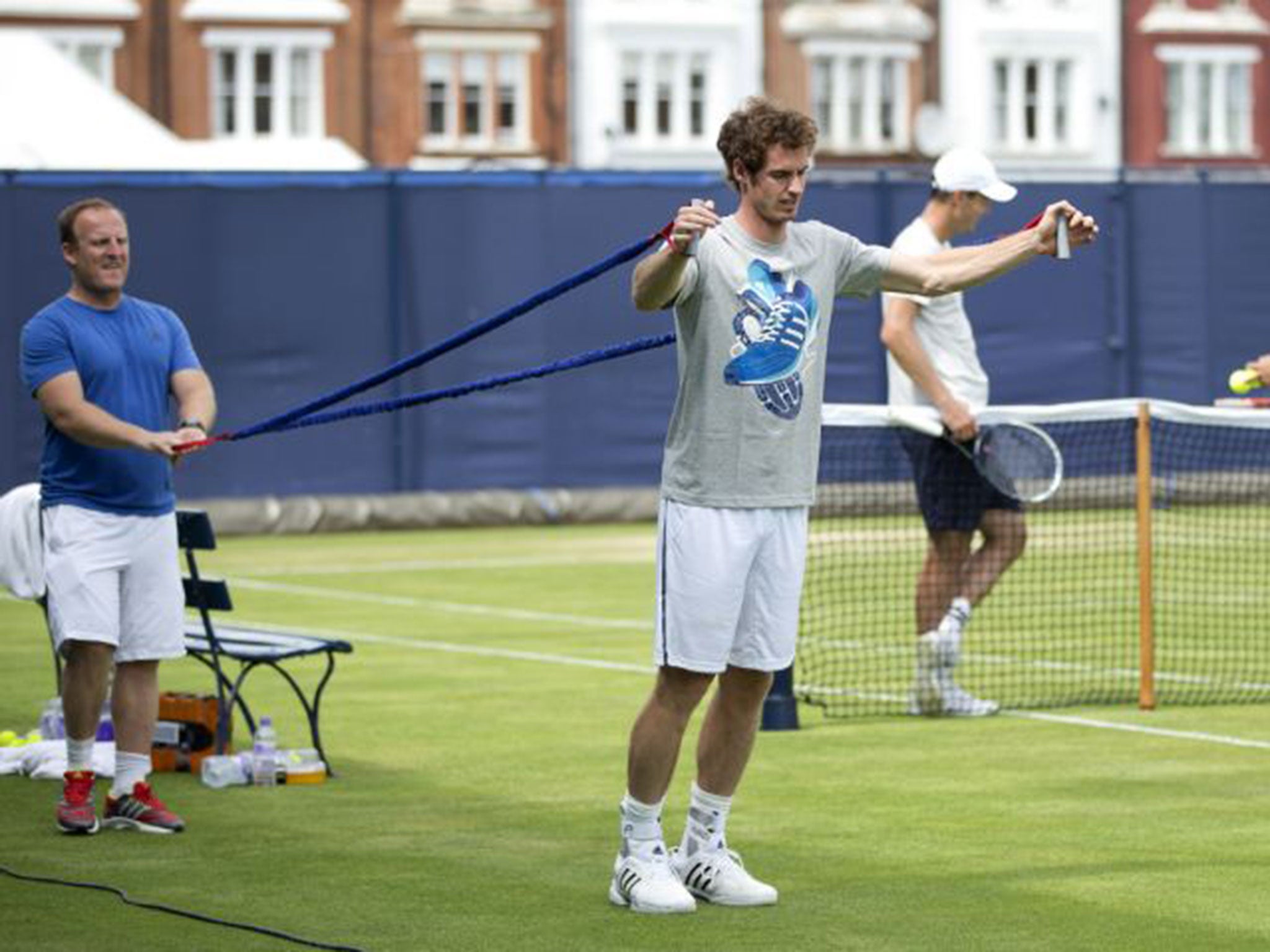Andy Murray very much the pride of home town Dunblane

It is when Andy Murray goes back to his home town of Dunblane that he really appreciates exactly what he has achieved.
When he took an open-top bus through the town after winning Olympic gold and the US Open in 2012, an estimated 20,000 people, more than double the population, lined the streets.
The tennis courts where Murray learned the game with brother Jamie were packed with youngsters desperate for a hit with the local hero.
In April he could not contain his emotions when he returned to his old school to receive the freedom of the city of Stirling.
Murray has put a smile on the face of a town haunted by an unspeakable tragedy.
The Scot was eight when Thomas Hamilton shot dead 16 children and a teacher at Dunblane Primary School, too young to comprehend the horror of what he had been caught up in.
Murray spoke publicly about it for the first time in a BBC documentary, and was reduced to tears before he had uttered a word.
"It is just nice being able to do something the town is proud of," he eventually said.
And proud they are, of the shy, polite boy who ended Britain's 77-year wait for a Wimbledon men's singles champion.
Competitiveness marked out Murray as a child, on the tennis court and everywhere else.
He had the perfect motivation in trying to beat Jamie, who is only 15 months older, and a burning desire to be the best.
At 15 that drove him to move to Spain and the Sanchez-Casal Academy near Barcelona.
He was already one of the best juniors in the world but when he learned Rafael Nadal was training with then world number one Carlos Moya in Majorca, playing with Jamie was not enough.
Murray has never taken the easy option when a harder one is available.
Winning the US Open junior title in 2004 marked out Murray as one to watch, and when he played at Queen's and Wimbledon the next summer it was clear he was headed for the top.
Many people say they want to be the best they can; with Murray it was little short of an obsession.
The Lawn Tennis Association appointed Andre Agassi's former coach Brad Gilbert in 2006 to work with him at considerable expense, but Murray knew the relationship was not what he needed.
Instead he surrounded himself with a team who could help him turn from skinny teenager into elite athlete.
Murray puts himself through gruelling training blocks every pre-season.
Everything within his control is taken care of, the idea any stone could be left unturned unthinkable.
What is not within his control, of course, is results.
In an era dominated by Roger Federer and Rafael Nadal, and latterly Novak Djokovic, winning grand slam titles has probably never been harder.
Murray won his first ATP Tour title as an 18-year-old and broke into the top 10 a year later.
He reached a grand slam final for the first time at the US Open in 2008, losing to Roger Federer. It was a disappointment, of course, but his time would come.
More finals followed, at the Australian Open in 2010 and 2011, but he could not even win a set.
After all the hard work, everything he had put in, the idea it was still not enough was heartbreaking. What more could he do?
At the start of 2012 he began working with eight-time slam winner Ivan Lendl. Murray made the semi-finals of the Australian Open and lost an epic match against Djokovic.
He allowed himself to think about the possibility it would not happen for him. He confronted his fear and came to terms with it.
Another grand slam final followed, this time at Wimbledon, the first British man to make it that far in singles in 74 years.
The result was the same, Federer beating Murray in a third slam final, but this time he had done himself justice, and his Centre Court tears did not leave him drowning in a pit of despair.
Instead, Murray was back on Wimbledon's main stage four weeks later, beating Federer to win Olympic gold. It was not a grand slam, but it was huge.
His next chance at slam glory came little over a month later at the US Open, where this time Djokovic stood in his way.
Murray went two sets up, back came Djokovic, but the stubborn Scot simply refused to lose a fifth final. Finally, he was the one with the trophy.
And last summer he was the one with THE trophy.
A year after losing to Federer there were tears of joy on Centre Court as Murray survived three tight sets and an epic last game to defeat Djokovic again and lift the Wimbledon trophy.
Murray returns to the All England Club with a different pressure on his shoulders, the pressure of what comes next.
He has come through back surgery and has a new and intriguing coaching partnership with former Wimbledon champion Amelie Mauresmo.
A nation expects once more but, win or lose, in Dunblane they will love him just the same.
PA
Subscribe to Independent Premium to bookmark this article
Want to bookmark your favourite articles and stories to read or reference later? Start your Independent Premium subscription today.

Join our commenting forum
Join thought-provoking conversations, follow other Independent readers and see their replies